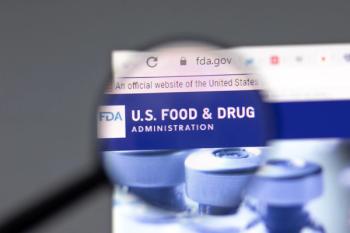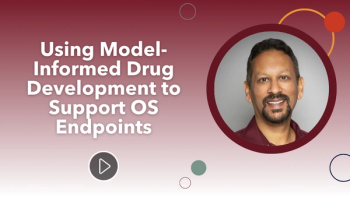
Personalized Medicine and Companion Diagnostics
The era of personalized medicine is fast approaching and, in many therapeutic areas such as oncology, is already underway.
Summary
The era of personalized medicine is fast approaching and, in many therapeutic areas such as oncology, is already underway. Now a topic of public discussion, the drive for precision medicine is being pushed from behind as a response to the lack of widespread efficacy many existing drugs offer, and pulled from ahead by recent advancements in technology and capabilities in pharmacogenomics. Moreover, the FDA has reprioritized and implemented significant changes to its infrastructure to leverage the progress, for example, of the human genome project. In the past few years, the research community has experienced a rapid upswing in the number of companion diagnostics being developed and approved. As we look to the future of precision medicine, we must first understand and actualize the role of companion diagnostics in clinical research, product development, and, ultimately, drug administration.
Introduction
In his 2015 State of the Union Address, President Barack Obama introduced the American people to the concept of personalized medicine when he announced his new precision medicine initiative intended to “lead a new era of medicine, one that delivers the right treatment at the right time.” The president urged Congress to increase research funding to support investment in precision medicine “to bring us closer to curing diseases like cancer and diabetes - and to give all of us access to the personalized information we need to keep ourselves and our families healthier.” The successful sequencing of the human genome was actually accomplished more than a decade before, and though much progress was made, it went with little public notice until now.
What’s driving this new initiative? There has long been a recognition that many drugs are ineffective in a large proportion of the patient populations they intend to treat. In 2001, Trends in Molecular Medicine published survey results demonstrating the percentages of patients for whom drugs are ineffective.1 These startling numbers suggest a lack of efficacy exceeding 40 percent associated with drugs intended to treat conditions including diabetes, migraines, cancer, asthma, arthritis, Alzheimer’s disease, and many more. If these drugs fail to benefit large proportions of their intended target population, shouldn’t we be able to do better? With the completion of the human genome mapping project in 2004, the tools needed to forge a new era of progress have become available.
A Busy Decade at the U.S. Food and Drug Administration (FDA)
Since the 1998 approval of Herceptin - the first product approved by the FDA that relied on its unique pharmacogenomics characteristics - the FDA has approved more than a hundred drugs that reference their own unique pharmacogenomics attributes in their labeling. In 2013, four of the twenty-seven new molecular entities approved were co-developed with a companion diagnostic, and, in the two-year period covering 2013 and 2014, a quarter of the sixty-eight new drug approvals were for such uniquely targeted therapies. These figures demonstrate not only progress, but also a strong FDA bias in favor of these targeted therapies. Targeted therapies often qualify for special FDA consideration and are good candidates for programs like breakthrough designation, fast track, accelerated approval, and priority review. In 2014, two-thirds of the new drugs approved were designated under one or more of these special programs, demonstrating the clear value of these designations.
Without much fanfare, a shift in the FDA’s prioritization has brought greater attention to targeted therapies. But how has this shift occurred? In response to the completion of the human genome project, the FDA began to implement significant changes to infrastructure to better leverage the progress of the human genome project. At the heart of this effort was the creation of many new FDA programs and offices, including:
- The Voluntary Exploratory Data Submission Program, which handles genetic target reviews offline from the product review divisions
- The Office of In Vitro Diagnostics and Radiological Health (OIR)
- The Center for Devices and Radiological Health (CDRH) Personalized Medicine staff in OIR
- The Genomics and Targeted Therapy Group in the Office of Clinical Pharmacology within the Center for Drug Evaluation and Research (CDER)
- The National Center for Toxicological Research’s Center of Excellence for Bioinformatics, Functional Genomics, and Structural Genomics
- The Office of Special Medical Programs
- The Office of Combination Products
- The Center for Biologics Evaluation and Research (CBER) Genomic Evaluation Team for Safety
- The FDA Genomics Working Group
As a result of these efforts, targeted therapies have begun to reach mainstream medicine. The ability to optimize efficacy while potentially minimizing risks makes for a more attractive benefit-to-risk balance in many cases. The most significant breakthroughs have been in the areas of cancer, genetic diseases, and infectious diseases, but significant potential awaits in many other areas. A partial list of drugs approved by the FDA that have relied on pharmacogenomics data to target these therapies includes drugs like: trastuzumab, valproic acid, citalopram, pimozide, aripiprazole, tetrabenazine, capecitabine, ivacaftor, and others.
The Role of Companion Diagnostics
Companion diagnostics will be an integral part of the personalized medicine program. To target the right patients, for whom the benefit-to-risk profile may be favorably influenced, we need to know who these patients are. Companion diagnostics may tell which patient should or should not receive a particular medication. The FDA has stated it may require a companion diagnostic when a drug works on a specific genetic or biological target present in only some patients. The first such use of a companion diagnostic occurred with Herceptin; the HER2 diagnostic test helps identify the approximate third of breast cancer patients with high HER2 expression as the best candidates for treatment. In August 2014, the FDA issued its guidance on companion diagnostics, which provides important insights to developers of targeted therapeutics along with their associated companion diagnostic devices.2 Companion diagnostics for targeted therapeutics are considered by the FDA to be essential to the safe and effective use of their corresponding therapeutic because they help 1) identify patients most likely to benefit, 2) identify patients that run at increased risk of adverse events, and/or 3) permit monitoring of patient response to inform treatment or dosage adjustments.
FDA Guidance Highlights
Developers of personalized therapeutics and companion diagnostics are advised that close cooperation and early collaboration with the FDA will be required to streamline the development process. In the FDA’s experience, the process works best when diagnostic development begins before the companion drug enters clinical trials, in which case drug and diagnostic development can occur in parallel. While the Office of Combination Products can be a strong ally in your development program, the responsibility of managing the dialogues needed with personnel at CDER or CBER and CDRH remain with the product sponsor. It’s recommended that a sponsor always ask for a consultation with the Office of Investigational Diagnostics when potentially developing a companion diagnostic in a drug trial. In addition, pre-investigational device exemption (IDE) and pre-investigational new drug (IND) meetings for both new and aftermarket diagnostics are highly recommended.
Because companion diagnostics are usually considered critical to the safe use of the corresponding personalized therapeutic, they are considered to be high-risk devices, and, therefore, clinical trials require submission of an IDE application, contrary to the situation with most standard diagnostic products. At present, companion diagnostics are treated as Class 3 medical devices, therefore requiring submission as either an NDA, biologics license application (BLA) or an original premarket approval (PMA) for approval.
Conclusion
More than a hundred drug products have already used genetic information to improve or enhance therapeutic use. Genomic science will continue to provide many new clues leading to improved treatments, and the FDA has already invested significant resources in creating the necessary infrastructure to facilitate development of targeted therapeutics. The FDA is not only philosophically inclined, but has taken a role of leadership globally to promote the personalized medicine movement. The FDA’s early approval record reinforces the dramatic potential for patients, and abundant development opportunities exist. The possibility of a distinct paradigm shift to smaller patient populations with faster approvals is considered very likely, as demonstrated by the FDA’s 2014 approval record in which approximately two-thirds of the forty-one new molecular entities approved had either fast track status, breakthrough designation, priority review, or orphan designation.
___________________________________________
1. Brian Spear, Margo Heath-Chiozzi, and Jeffrey Huff. Trends in Molecular Medicine. 5th ed. Vol. 7. 2001. 201 to 204.
2. In Vitro Companion Diagnostic Devices - Guidance for Industry and Food and Drug Administration Staff, US Food and Drug Administration, August 6, 2014.
Newsletter
Stay current in clinical research with Applied Clinical Trials, providing expert insights, regulatory updates, and practical strategies for successful clinical trial design and execution.






.png)



.png)



.png)
.png)
